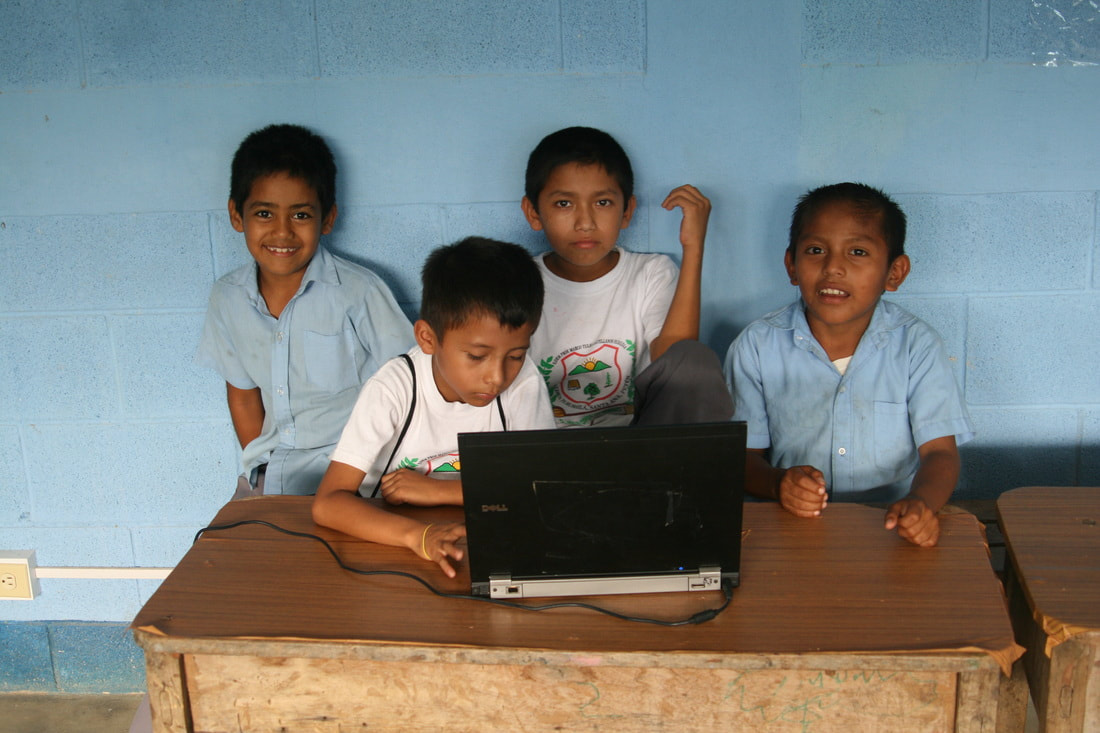|
Last week began a new educational project at the elementary school in Purushila. The program is based off of the SOLE model developed principally by, Sugatra Mitra. The basic premise is that students are presented with exceptionally difficult questions, and through trial and error, collaboration, and a strong support network, they arrive at an answer of their own accord. In this manner the students become their own teachers, and the teacher becomes more of a facilitator, who challenges students and offers encouragement when it is needed. The teacher is not supposed to offer any answers. In fact, in many cases the teacher will not even know the answer. It's perfect for developing nations like Guatemala which aren't exactly know for having an abundance of world-class teachers. It is also quite a bit different from the conventional model which stresses memorization and recitation for tests. The hope is that, by challenging students and offering them all the autonomy they could want, we can make learning fun and engaging again, and certainly much less terrifying.
I'd like to take you through our first day of class. It began with the requisite high-fives, because you just can't pass up an opportunity to lend class that basketball game atmosphere. After that the students took their seats and the following question was raised, “What are the rules of the ancient Chinese game, Mahjongg?” I chose this question because the game could be intuitively searched for on the computer, and once it was discovered, figuring out the rules was only a matter of recognizing a pattern. Needless to say the kids did not exactly fly out of the gate. They all struggled with locating the Mahjongg application on their computers. One group of younger students even struggled with turning their computer on. However, about 30 minutes in, one group finally managed to locate the historic Chinese game. After that it was a matter of seconds before the information had spread throughout the room and everyone was staring at a simulated pyramid of tiles. The game itself consists of removing tiles from the pyramid in matching pairs, however not all the tiles are in play. Tiles can only be used if they are located at the end of a row and are not obstructed by another tile. All other tiles have to be liberated before they can be used to diminish the size of the pyramid. Most of the kids instinctively started clicking on matching tiles however they were confused when some of there efforts were rewarded while others simply yielded no results. They stubbornly kept click matching tiles with limited success until I asked them close their computers and write down everything they knew about the game of Mahjongg. Since I had been watching, I was not surprised when all the groups correctly identified that they game consisted of eliminating tiles by identifying pairs. But there was one group that had slipped my attention, and when it came time for them to present, I was stunned to hear that they had not only identified the method for removing tiles, but had figured out the pattern for determining which tiles were in play and which were not. So there you have it, in an hour and a half the students went from not knowing how to turn a computer on, to both locating and understanding the game Mahjongg. And we've only advanced from there. So far we've observed lunar cycles, explored the worlds longest rivers and glimpsed infinity through the beauty of fractals. It's way to early to call this program a success, but one can only hope that we are instilling in these children the curiosity and creativity to challenge institutions, to crave information and answers from an educational system that's only interested in feeding them complacency. One can only hope we're equipping them with the tools to break free from the cycle of poverty.
0 Comments
Leave a Reply. |
AuthorWrite something about yourself. No need to be fancy, just an overview. Archives
May 2013
Categories |
|
OUR MISSION: SewHope partners with the poor, marginalized, and exploited in Guatemala to help end the injustices of poverty and bring about sustainable communities.
|
© SewHope Inc. All rights reserved.
SewHope is a registered 501(c)(3) nonprofit organization. All donations in the United States are tax-deductible.
EIN: 26-1639100
EIN: 26-1639100



 RSS Feed
RSS Feed